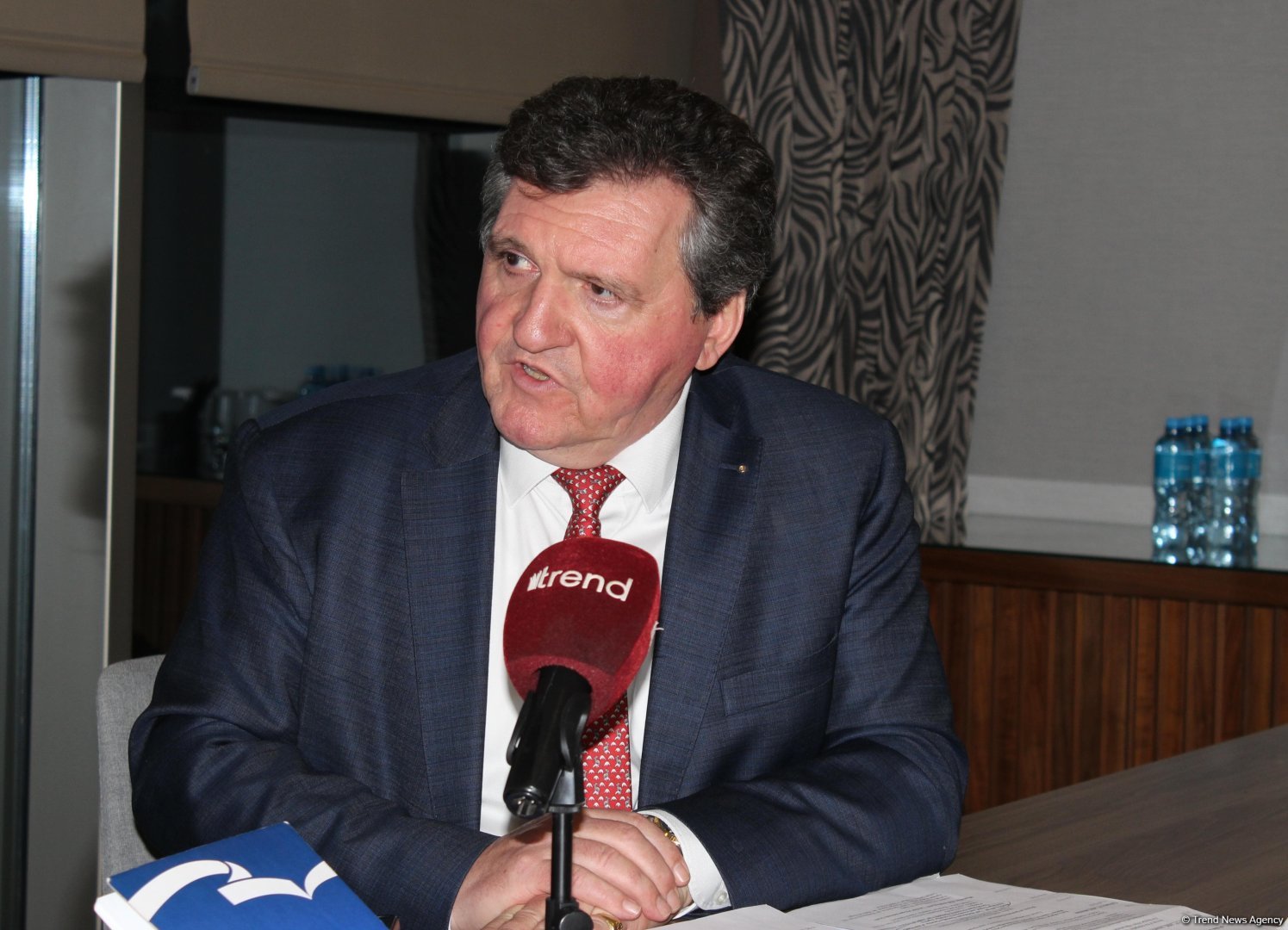BAKU, Azerbaijan, May 14. The Middle Corridor is fast becoming a vital alternative to traditional trade paths, Stef Goris, Chairman of the Belgian-Azerbaijani Chamber of Commerce, said, addressing a business event in Brussels, Trend reports.
“Azerbaijan is a country that knows exactly where it wants to go: to become a regional hub for logistics, energy transition, high-tech manufacturing, and international investment. And it has the geographic leverage to achieve that. Azerbaijan is the only – I emphasize the only - viable overland corridor connecting Europe to Central Asia, China, and the far East. This route—known as the Middle Corridor—is fast becoming a vital alternative to traditional trade paths,” he said.
Goris pointed out that in a time of geopolitical uncertainty, disrupted supply chains over sea, and a shift toward regional diversification, this East-West axis offers stability, security, and strategic reach.
“And at the heart of it lies Azerbaijan. For European businesses—and Belgian ones in particular—this is not only an opportunity. It is an invitation to help shape a new logistics and industrial backbone stretching from Antwerp to Almaty, from Liège to Lianyungang,” he said.
The Middle Corridor is a transportation and trade route that connects Asia and Europe, passing through several countries in the region. It is an alternative route to the traditional Northern Corridor and Southern Corridor.
The route starts in China and crosses Central Asian countries such as Kazakhstan, Uzbekistan, and Turkmenistan. It then passes through the Caspian Sea, Azerbaijan, Georgia, and Türkiye before reaching Europe. The Middle Corridor offers a land route that connects the eastern parts of Asia, including China, with Europe, bypassing the longer maritime routes.







